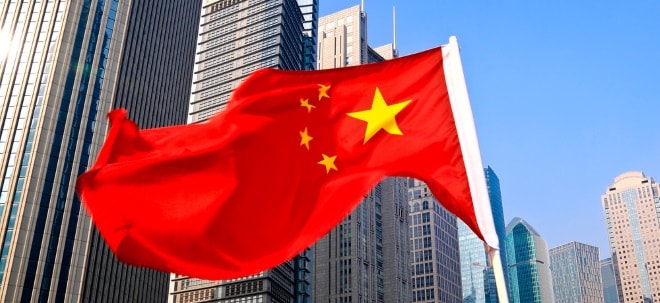Shares in this article
Energy bottlenecks aggravate the situation
The end of the supply chain problems is not yet in sight
One speaks of stagflation when an economic downturn and rising inflation come together. The term was coined for the first time during the oil crisis of the 1970s, when the rapidly increasing prices on the one hand were contrasted with the sharply falling GDP growth on the other. Now various experts see a similar danger for the People’s Republic of China, which in turn could affect the whole world.
In doing so, market experts refer to the latest economic data from the country in the middle. Industrial sentiment declined in October and remained below the expansion threshold, while a slight recovery was assumed beforehand. Responsible for this is, on the one hand, the ongoing scarcity of raw materials and recurring energy bottlenecks, which leave entire regions in China temporarily without electricity. In addition, the clogged supply chains mean that orders that have been placed for a long time cannot be delivered, which is an additional drag on the economy.
And while the mood in the industry continues to deteriorate, prices only know one direction – upward. In September, the producer price index in China jumped 10.7 percent year-on-year.
Economic stimuli not an option
Nevertheless, according to Autonomous Research analyst Charlene Chu, it is difficult to stimulate the economy in this climate. Ultimately, the current energy shortage would be exacerbated by economic incentives, as this would increase the demand for electricity even further. On the other hand, factories affected by power outages could not contribute to the country’s economic recovery, Chu told CNBC.
China is therefore in a kind of stalemate situation: “So I think we are in a situation right now where a lot of factors are pushing growth and they are not going to go away anytime soon and we probably will in the next few months as well not getting aggressive Chinese stimuli “. In addition to the negative factors already mentioned, the real estate sector in crisis, led by China Evergrande, is also putting pressure on the growth of the People’s Republic.
In the third quarter, the Chinese economy only grew by 4.9 percent, which is the lowest growth in a year.
Risk of stagflation “very real”
The risk of stagflation in China is therefore “very real” in the next few quarters, as Chu puts it. The expert is not alone with this opinion. Zhang Zhiwei of Pinpoint Asset Management also told CNBC that he was concerned about the situation in China. He goes a step further, however, by saying that there are signs that suggest China is already in stagflation.
He cites the industrial production index as a justification, which has recently fallen sharply, while at the same time the producer price index has risen to its highest level since it was first published in 2016.
The whole world is groaning under the interrupted supply chains
But not only China is confronted with this difficult situation. The whole world was thrown off course on an economic level by the corona pandemic. With demand plummeting, the industry was faced with numerous canceled orders. A large number of material was not ordered and what was requested could not be delivered due to lockdowns and contact restrictions. This year, for many, the trend reversal occurred much earlier than expected. Demand suddenly rose again, but the orders and deliveries from before and during the crisis had not yet been fully processed. Goods jam, supply chains are interrupted, and the consequences are empty shelves and material bottlenecks.
The rapidly growing energy prices are creating additional pressure and increasing producer and consumer prices. The question is of course when this exceptional situation caused by the corona pandemic will end again. HSBC expert Shanella Rajanayagam told Bloomberg that the disruptions could continue “at least until the middle of next year”, even if things will be eased after the Chinese New Year in early February.
A helping of luck
Still, luck could play a role in restoring supply chains, too, says Simon Heaney of Dewry to Bloomberg. Ultimately, extreme weather events or new corona hotspots could cause disruptions again. Therefore, in his opinion, investments should be made in more logistics capacities.
How exactly the future will develop after this crisis and how long it will take to escape stagflation cannot be foreseen at first, says John Butler of the World Shipping Council to Bloomberg: “The current situation is unique and very different from any rather isolated disruption that the world has experienced so far. The way in which the current traffic jam ultimately clears up will therefore also be different “.
Finanzen.net editorial team
More news about China Evergrande Group
–
Bildquellen: ArtisticPhoto / Shutterstock.com, Aleksey Klints / Shutterstock.com
–


